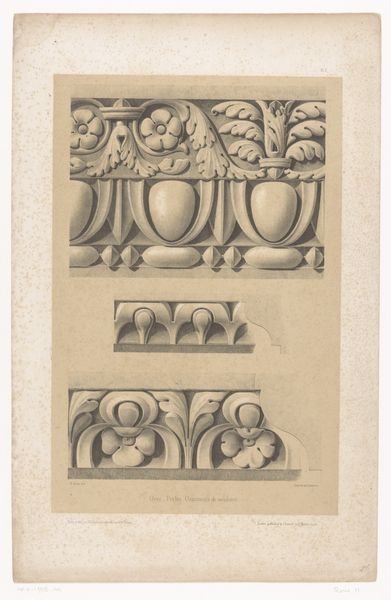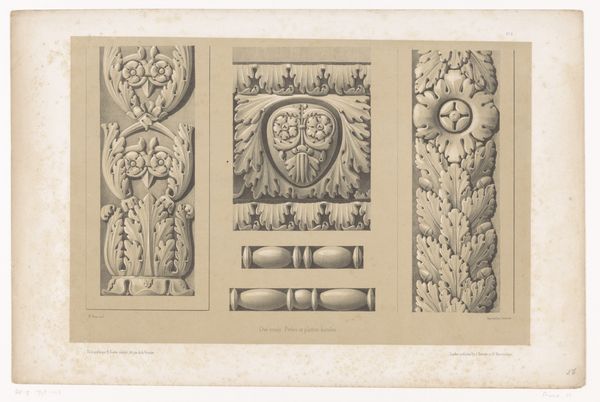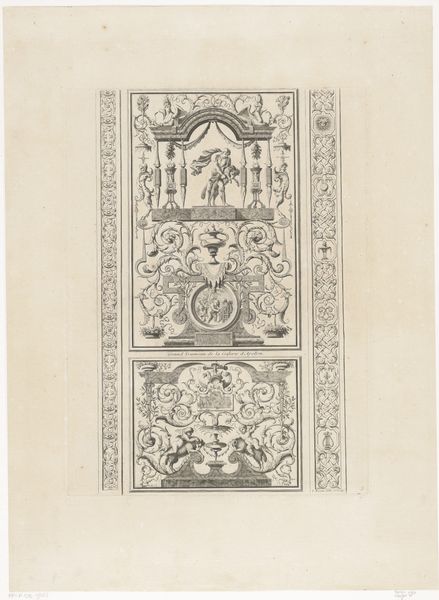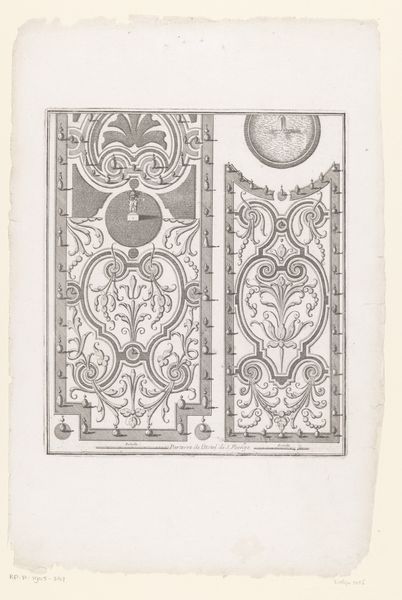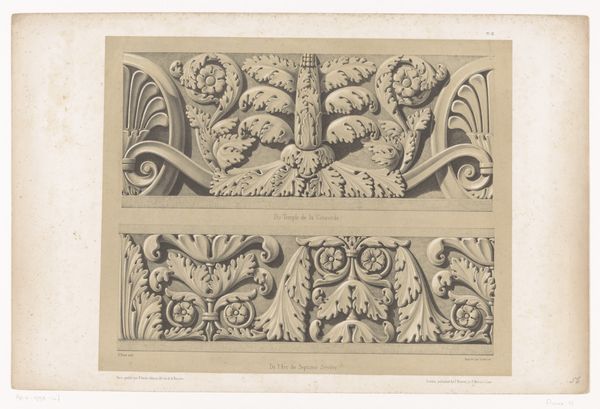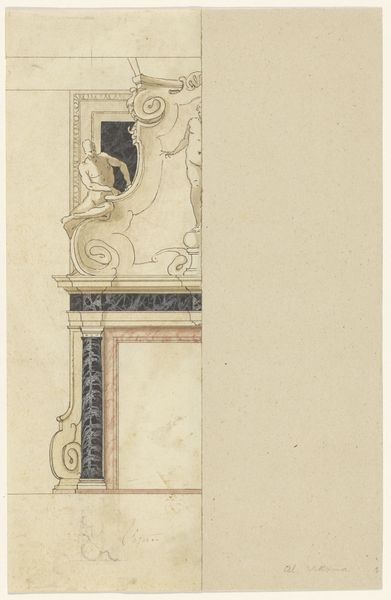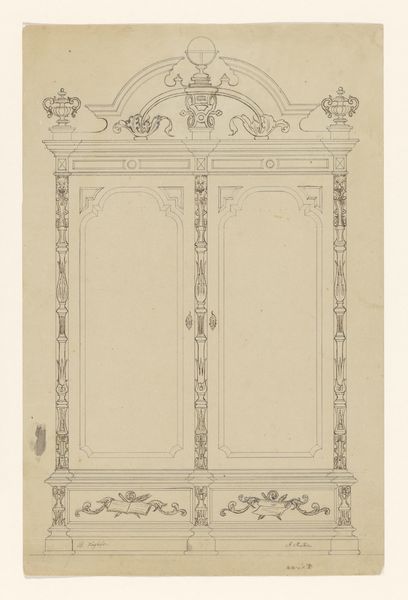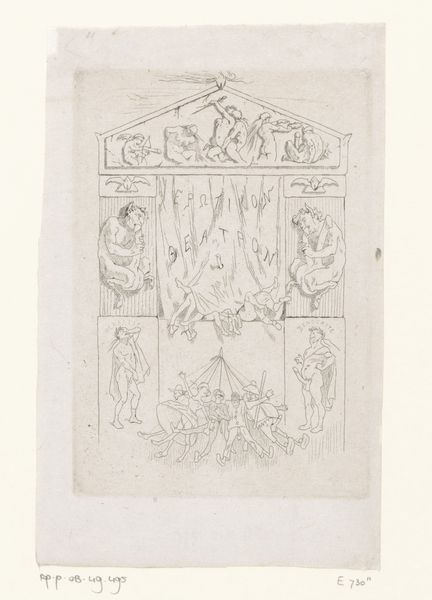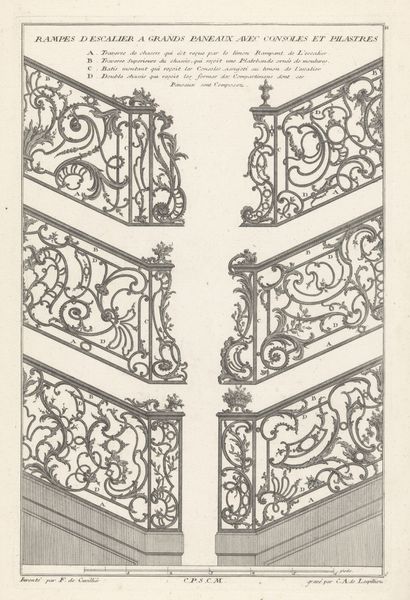
drawing, print, paper, pencil, architecture
#
drawing
# print
#
paper
#
form
#
geometric
#
pencil
#
academic-art
#
decorative-art
#
architecture
#
realism
Dimensions: height 485 mm, width 320 mm
Copyright: Rijks Museum: Open Domain
Curator: Looking at this print from the early to mid-19th century, attributed to Hubert Roux, titled "Sierlijsten," immediately makes me think about precision and intent. Editor: It strikes me as a quiet piece, almost austere in its monochromatic rendering. There's a delicate beauty in these architectural fragments. Curator: Roux employs pencil and paper here to showcase what I believe are templates, possibly designs for architectural trim or molding. The academic and decorative arts influences are very clear, displaying a concern for realism that likely mirrored prevailing aesthetics. We can discern distinct forms like geometric shapes rendered with careful shading. Consider what this signals regarding material accessibility to both artist and patron! Editor: Absolutely. Thinking about these decorative elements within a larger societal context, it raises questions about the social strata employing such embellishments and the labor required for their actual production in stone or plaster. Were these designs accessible, say, to emerging middle classes, or were they confined to elite circles and spaces as markers of status? How did that affect their own understanding of labor, beauty and access to resources? Curator: The question of labour here seems incredibly important. It connects not just the physical application of the materials but also how design knowledge was transmitted – were these prints widely available for study or limited to certain workshops, and how would these distribution networks have affected access to craft professions based on identity and access? Editor: Exactly. We see here the intersection of art and craft, blurring those conventional lines by forcing us to reckon with both the aesthetic ideal and the material conditions needed for its existence. It's fascinating to trace those links back, understanding how economic shifts shaped tastes. Curator: Agreed. And viewing it through this lens, "Sierlijsten" really speaks to the broader intersection of art, architecture, and society. The visual vocabulary is, in many ways, still relevant in how we understand form and function today, isn't it? Editor: It does. The very act of documenting these designs, reproducing them, has its own political dimensions—perhaps an attempt to democratize access to classical motifs, to redefine a collective visual vocabulary. Curator: I think this piece, when we delve into the production methods of prints like this, provides a powerful insight into how design and execution were not always separate disciplines but closely intertwined aspects of artistic endeavour. Editor: For me, its stark lines prompt reflection about who could then, and who can now, participate in shaping the visual environment around us.
Comments
No comments
Be the first to comment and join the conversation on the ultimate creative platform.
